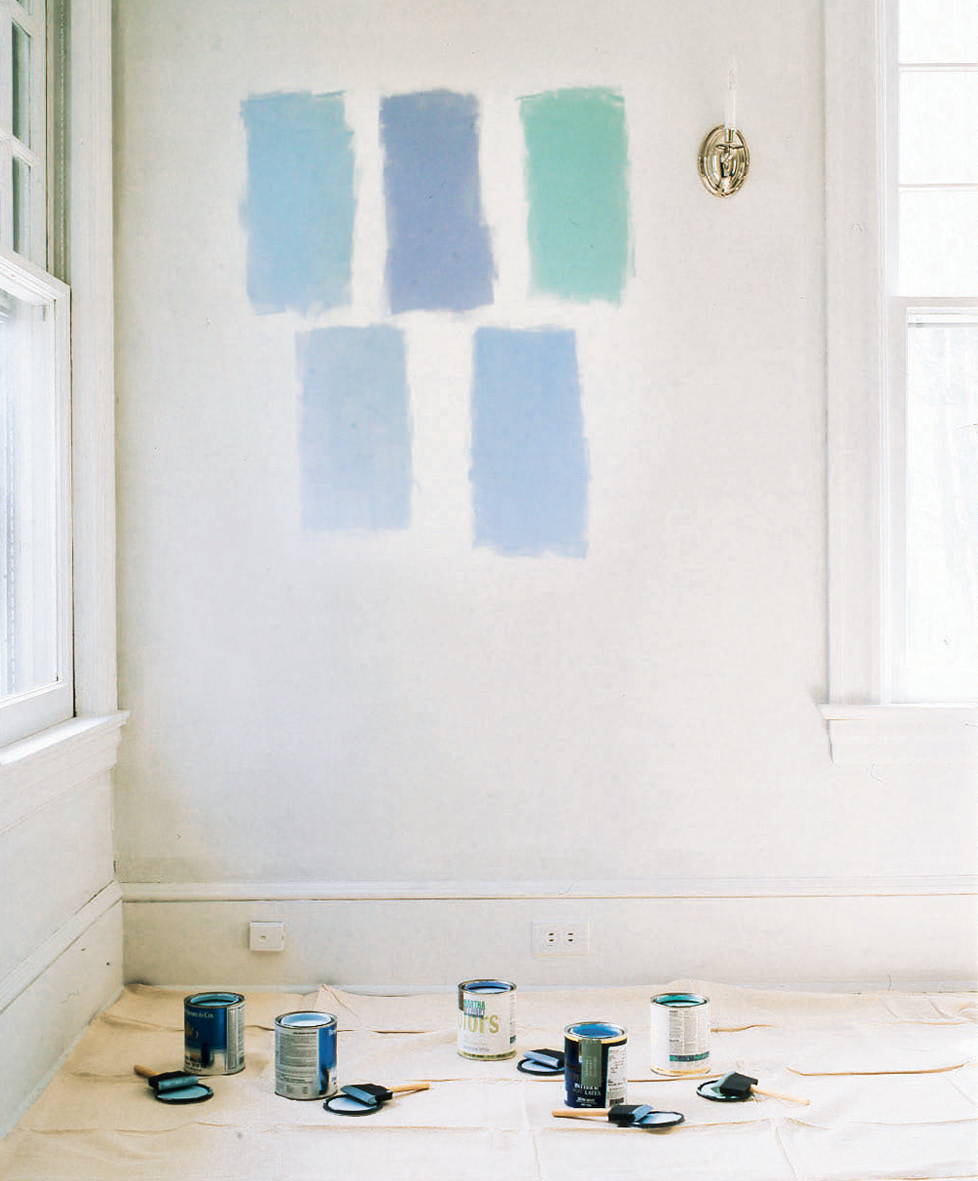
How TO
PAINT WALLS AND CEILINGS
Paint has the capacity to transform in many ways: It can make a room feel larger or smaller, shorter or taller, or take it from bright and cheery to warm and cozy (for a bedroom or reading nook), or just the reverse (the goal of most kitchen or playroom updates). If you don’t want to paint your entire living room a bold shade, consider a pop of color on an accent wall, or only on the trim (a terrific way to frame a room).
first things first
Always test several paint shades (even so-called white hues) on your wall before committing to one. Do this in different spots of the wall or areas of the room to account for variances in light; for the same reason, be sure to consider how the paint looks at different times of day and on sunny versus cloudy days.
When painting your swatches on the wall, “feather out” the edges to avoid creating a ridge that will have to be sanded later. Or, better yet, paint the swatches on poster board and then rest that against the target wall; this makes it easy to test the color in numerous locations.
You’ll need to choose the finish—e.g., shine factor—of the paint before getting an accurate read, too. Latex paint is the default paint for covering entire rooms, though oil-based paints (see page 89) are also available and used in certain projects that follow. These finishes are for latex.
- Flat, aka matte, has the least shine—hence, it is the most adept at hiding imperfections and the hardest to clean, making it a good choice for ceilings. Flat is recommended for bedroom and living area walls but not for high-trafficked areas (hallways, stairwells, mudrooms, bathrooms, and so on).
- Eggshell, aka satin, is an all-purpose choice for walls (and also ceilings), falling between flat and glossy. It’s especially popular in bathrooms and kitchens.
- Semi-gloss is just that: It has a higher sheen than eggshell without coming on too strong. Because it resists stains better than the other finishes, semi-gloss is often reserved for busy common spaces as well as kids’ rooms and playrooms.
- Glossy tops the charts for shine and cleanability, making it the best choice for trim. It also dries to a hard, shiny coat on furniture, if the lacquered look is what you’re aiming for.
To determine how much paint you will need, first calculate the square footage of the area. For each wall, multiply height times width, then add up the walls for the total coverage. Double this number for two coats. Allow at least 10 percent extra for future touch-ups. Divide square footage by 450 (1 gallon of paint typically covers 450 square feet).